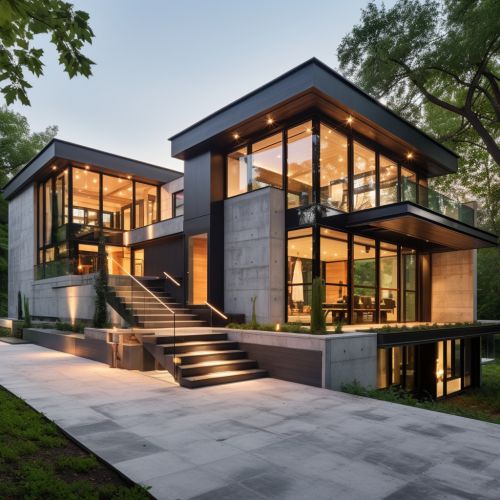Architecture
Introduction
Architecture is the art and science of designing and constructing buildings and other physical structures. It is a discipline that involves creating environments in which people live, work, and play. The field of architecture is vast, encompassing everything from small-scale projects such as home renovations to large-scale projects like urban planning. The practice of architecture involves a variety of tasks, including designing buildings, consulting with clients, and coordinating with other professionals such as engineers and builders.
History of Architecture
The history of architecture traces back to the dawn of civilization, where humans began to move from nomadic lifestyles to settled agricultural societies. Early architectural structures were simple and functional, primarily serving to provide shelter against the elements. As societies evolved, so did their architectural practices, with structures becoming more complex and ornamental.
Ancient Architecture
The earliest examples of architecture can be seen in the ancient civilizations of Egypt, Mesopotamia, and the Indus Valley. These societies built monumental structures, many of which have survived to this day. For example, the Egyptian pyramids and the Mesopotamian ziggurats are iconic architectural structures that showcase the engineering prowess and aesthetic sensibilities of these ancient civilizations.
Classical Architecture
The classical period of architecture, which includes Greek and Roman styles, is characterized by its emphasis on proportion, symmetry, and ornamentation. These societies developed architectural orders, or styles, that are still used today, including the Doric, Ionic, and Corinthian orders.
Medieval Architecture
During the medieval period, architecture evolved to reflect the changing social, political, and religious contexts. This era saw the development of Gothic and Romanesque styles, which are characterized by their use of arches, vaults, and intricate detailing.
Modern Architecture
The modern era of architecture, which began in the late 19th century, is characterized by a shift towards simplicity and functionality. This period saw the rise of styles such as Art Nouveau, Bauhaus, and International Style, which rejected historical precedents in favor of new materials and technologies.
Principles of Architecture
Architecture is governed by a set of principles that guide the design process. These principles include balance, proportion, rhythm, emphasis, and unity.
Balance
Balance in architecture refers to the equal distribution of visual weight in a design. This can be achieved through symmetry, where elements are mirrored on either side of a central axis, or through asymmetry, where elements are balanced through contrast and variation.
Proportion
Proportion in architecture involves the relationship between the parts of a structure and the whole. This principle ensures that each part of a design relates harmoniously to the rest.
Rhythm
Rhythm in architecture is achieved through the repetition of elements in a design. This can create a sense of movement and flow in a structure.
Emphasis
Emphasis in architecture involves creating a focal point in a design. This can be achieved through the use of color, texture, or form.
Unity
Unity in architecture involves creating a sense of harmony and wholeness in a design. This can be achieved through the use of consistent materials, colors, and forms.
Architectural Styles
Over time, a variety of architectural styles have emerged, each with their own unique characteristics and aesthetic qualities.
Gothic Architecture
Gothic architecture, which originated in the 12th century, is characterized by its pointed arches, ribbed vaults, and flying buttresses. This style is often associated with cathedrals and churches, such as the Notre Dame in Paris.
Renaissance Architecture
Renaissance architecture, which emerged in the 15th century, is characterized by its symmetry, proportion, and use of classical elements. This style is often associated with palaces and villas, such as the Villa Rotonda in Italy.
Modernist Architecture
Modernist architecture, which emerged in the early 20th century, is characterized by its simplicity, functionality, and use of modern materials. This style is often associated with skyscrapers and residential buildings, such as the Villa Savoye by Le Corbusier.
The Role of Architects
Architects play a crucial role in shaping our built environment. They are responsible for designing buildings and spaces that are functional, sustainable, and aesthetically pleasing. The role of an architect involves a variety of tasks, including conceptualizing designs, creating architectural drawings, and overseeing construction projects.
Education and Training
Becoming an architect requires a significant amount of education and training. This typically involves earning a degree in architecture, gaining practical experience through an internship, and passing a licensing exam.
Design Process
The design process in architecture involves a series of steps, from initial concept to final construction. This process begins with understanding the client's needs and site conditions, followed by creating preliminary designs, developing detailed plans, and overseeing the construction process.
Sustainable Architecture
In recent years, there has been a growing emphasis on sustainable architecture, which seeks to minimize the environmental impact of buildings. This involves designing buildings that are energy-efficient, use sustainable materials, and contribute to the well-being of their occupants.


